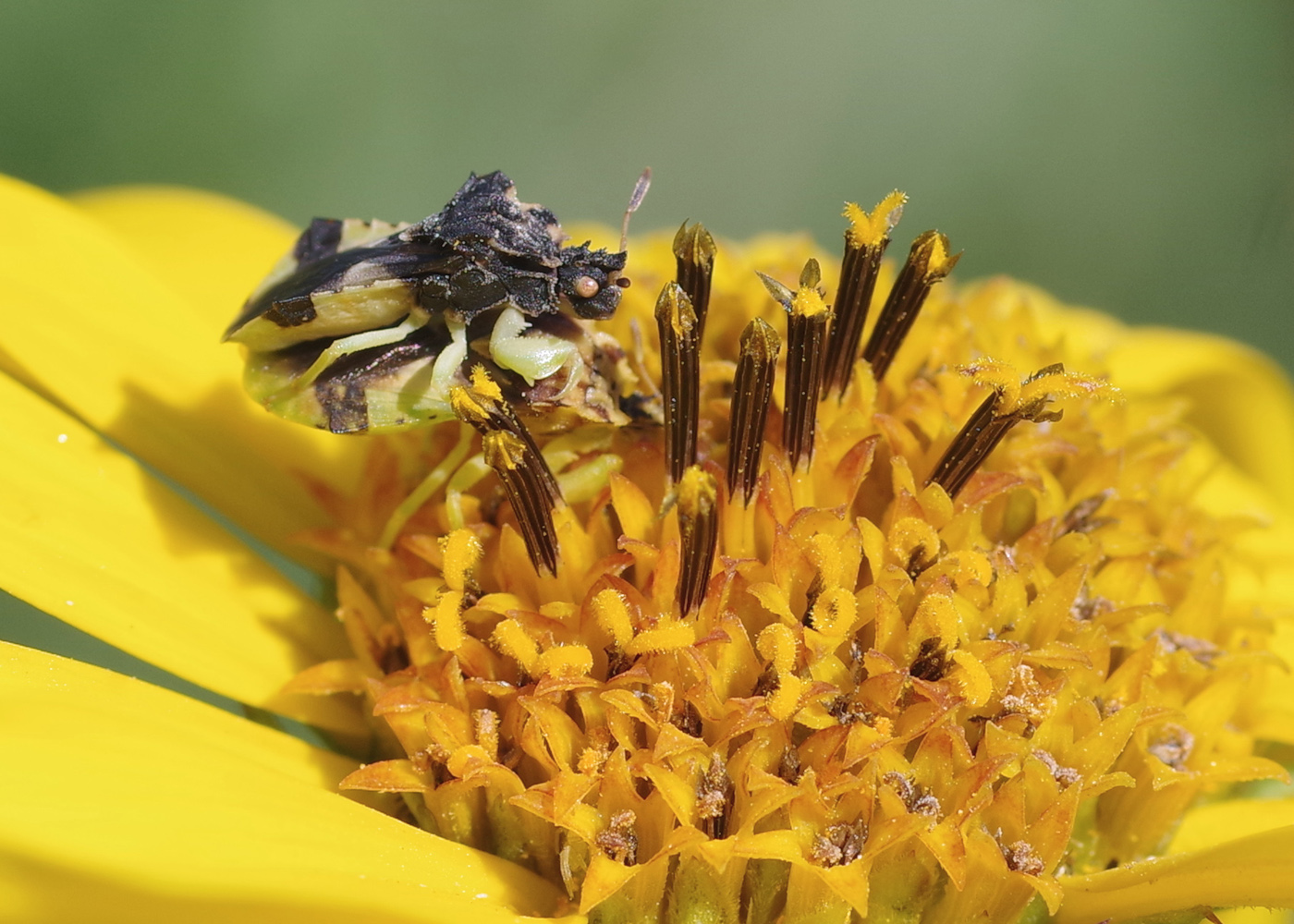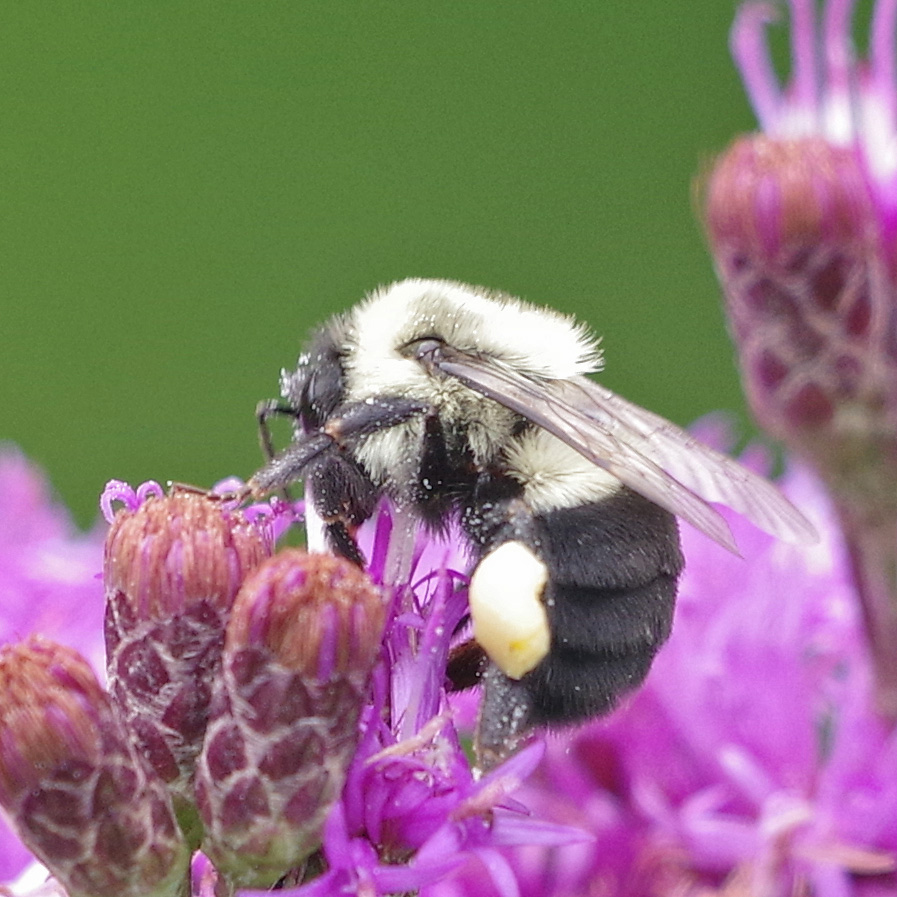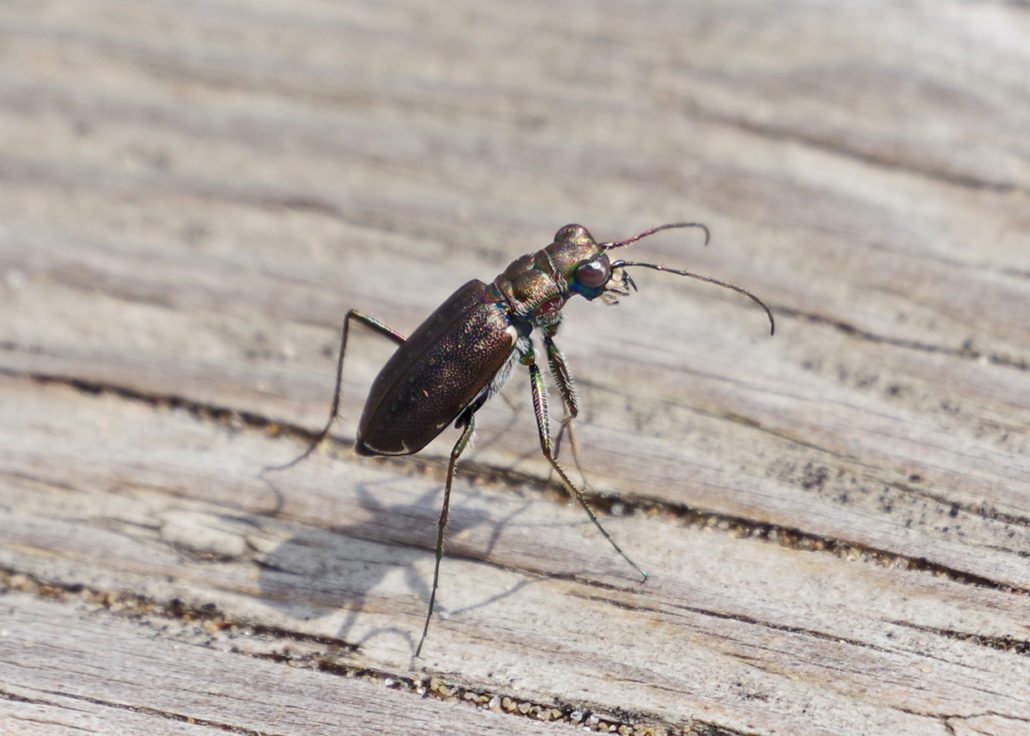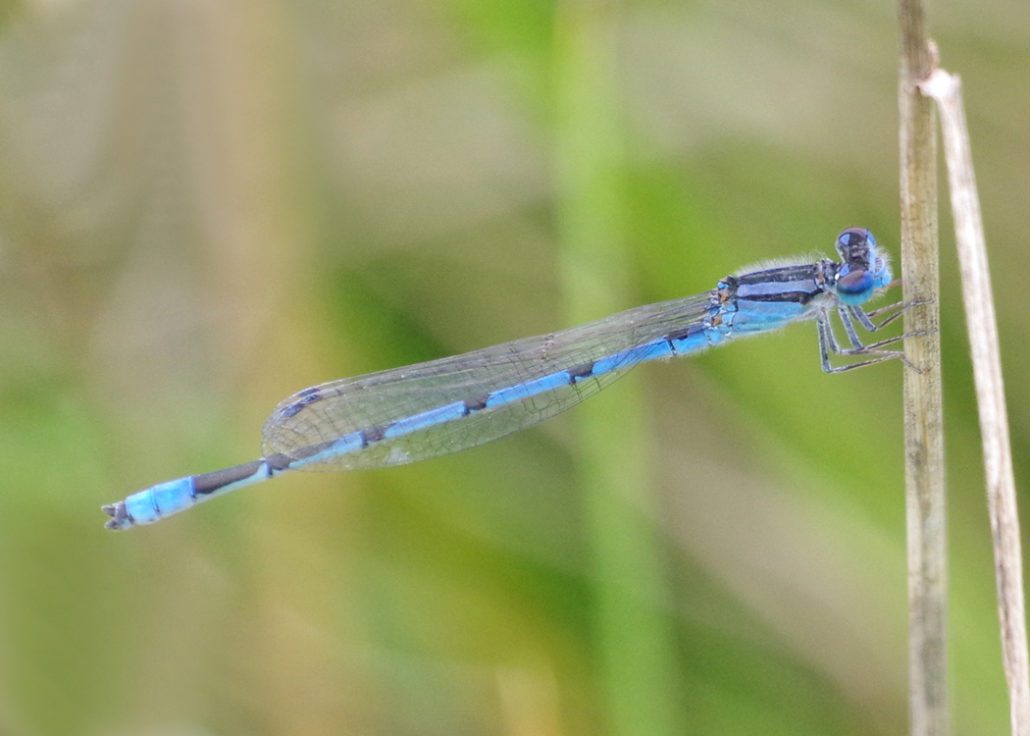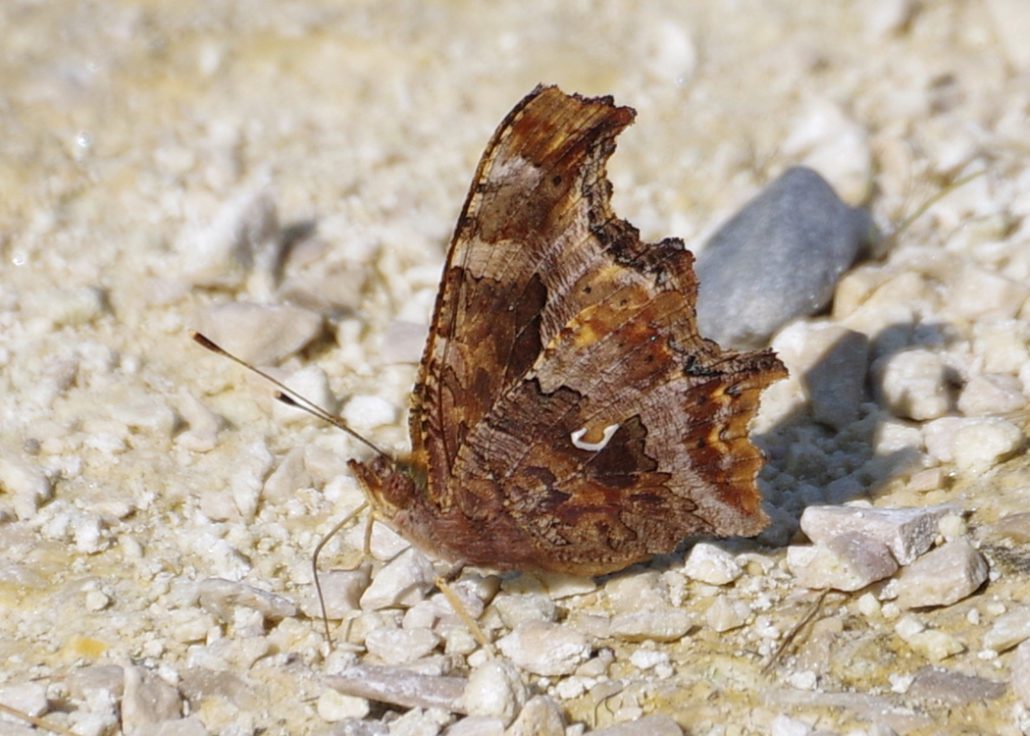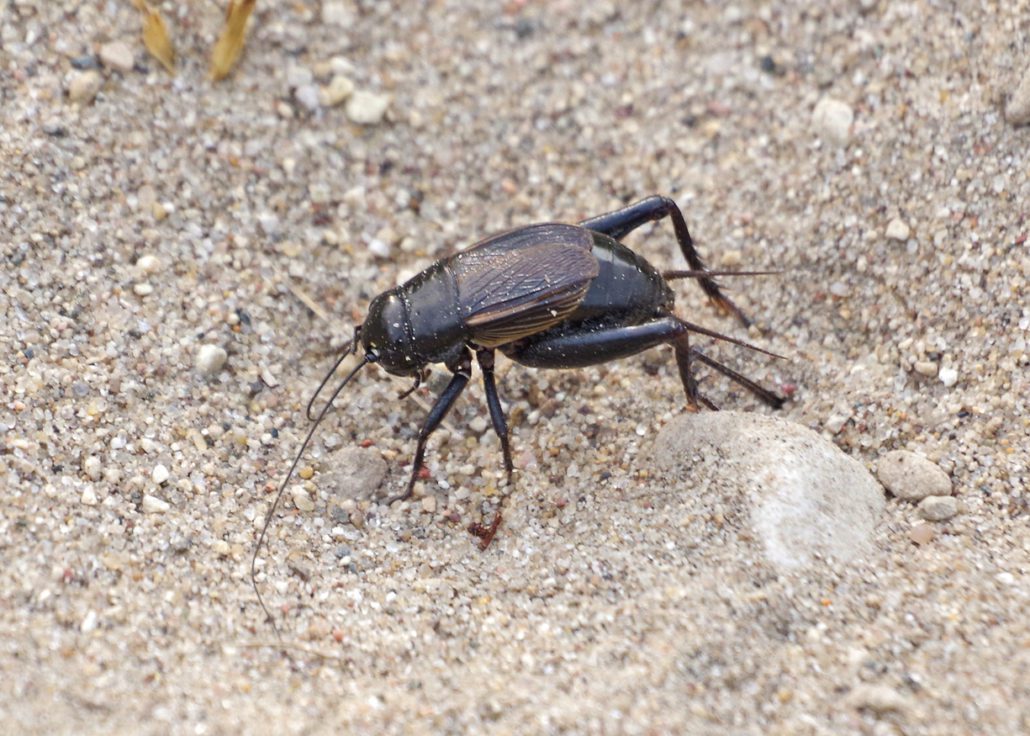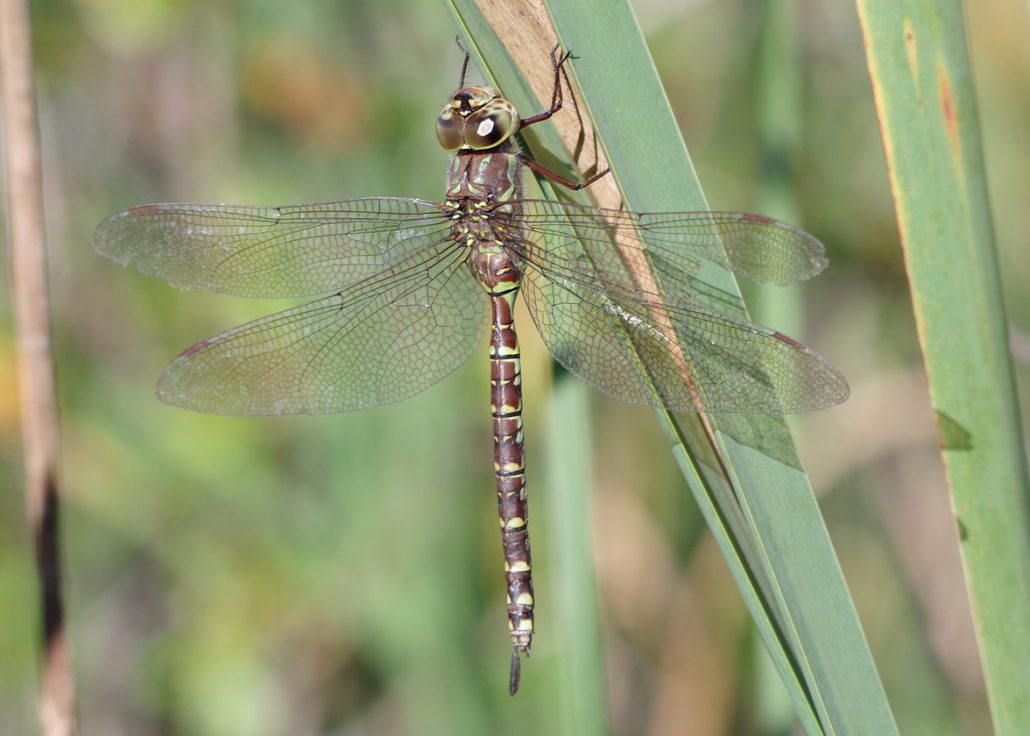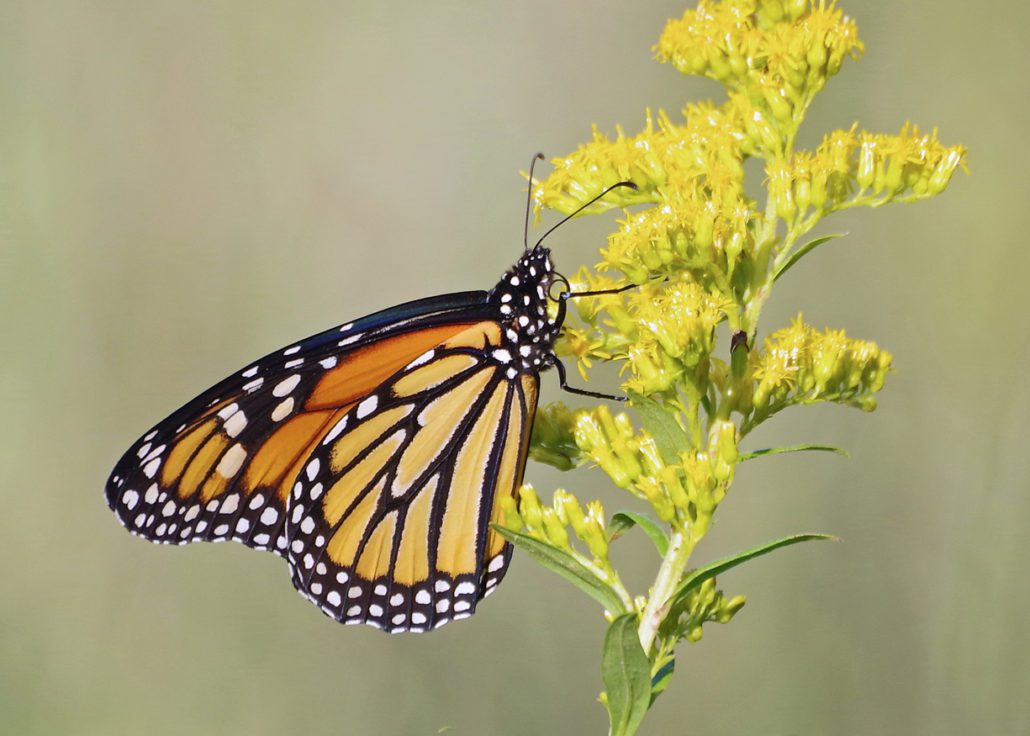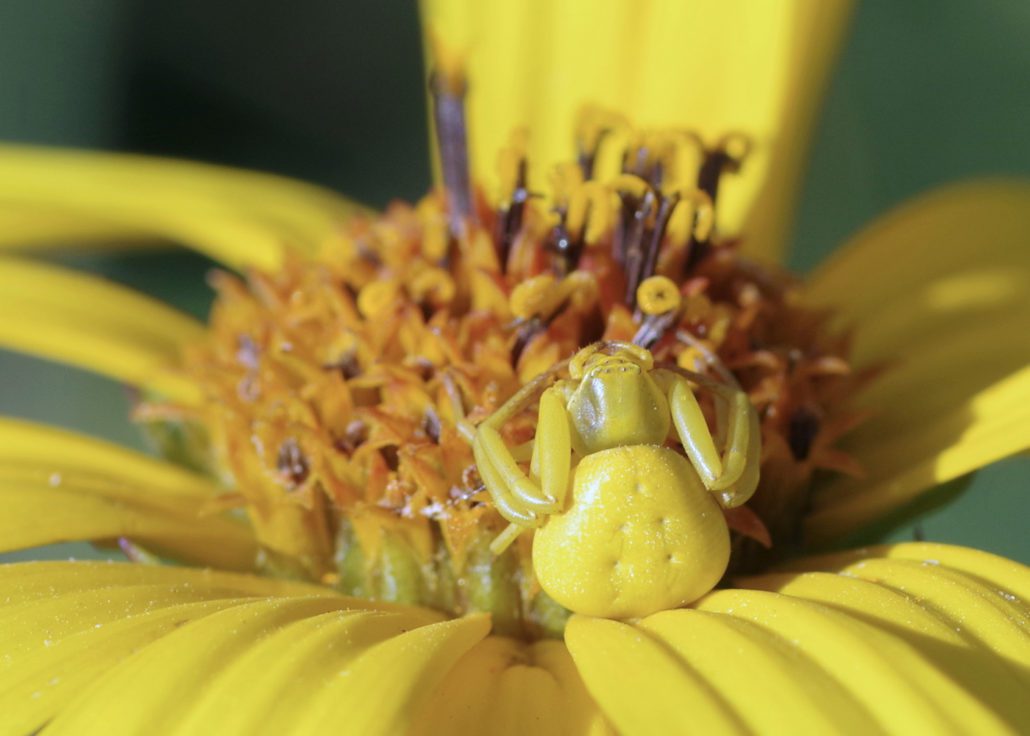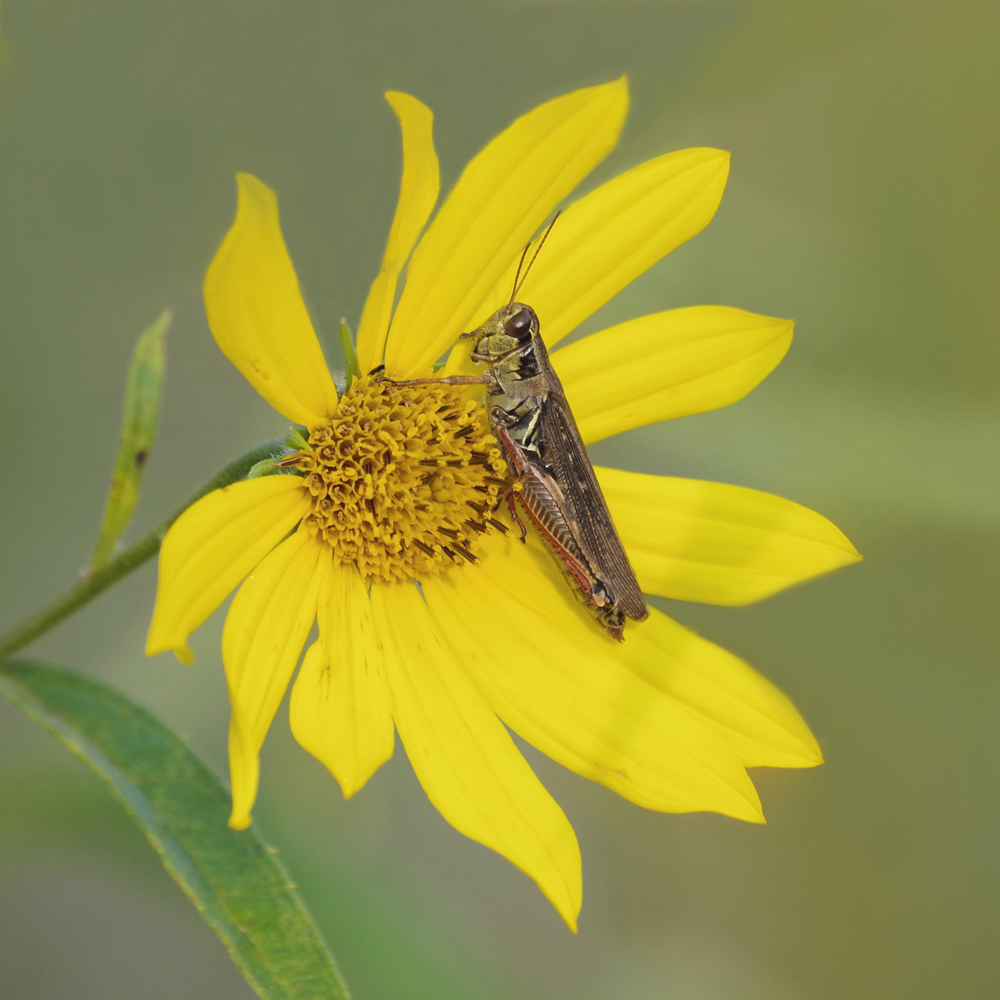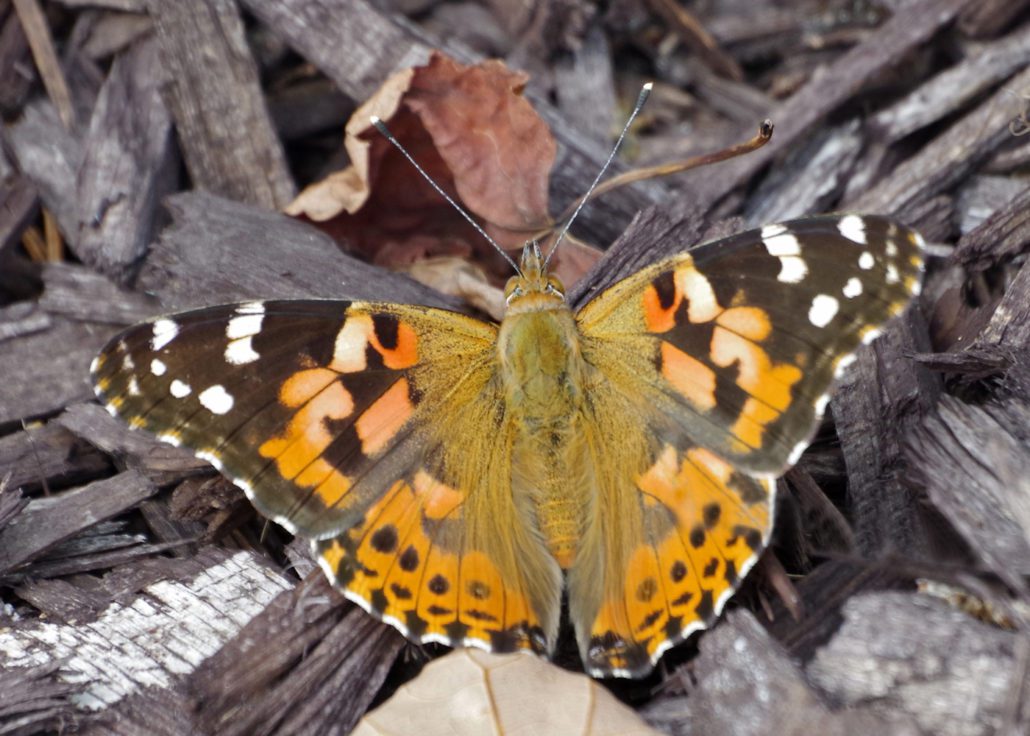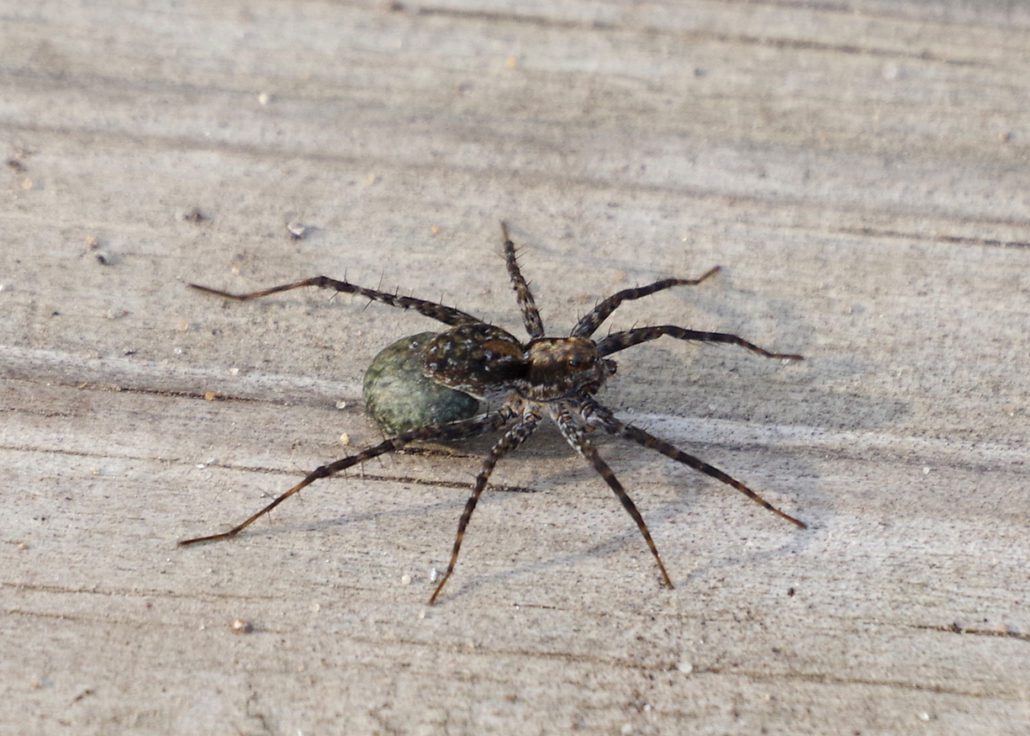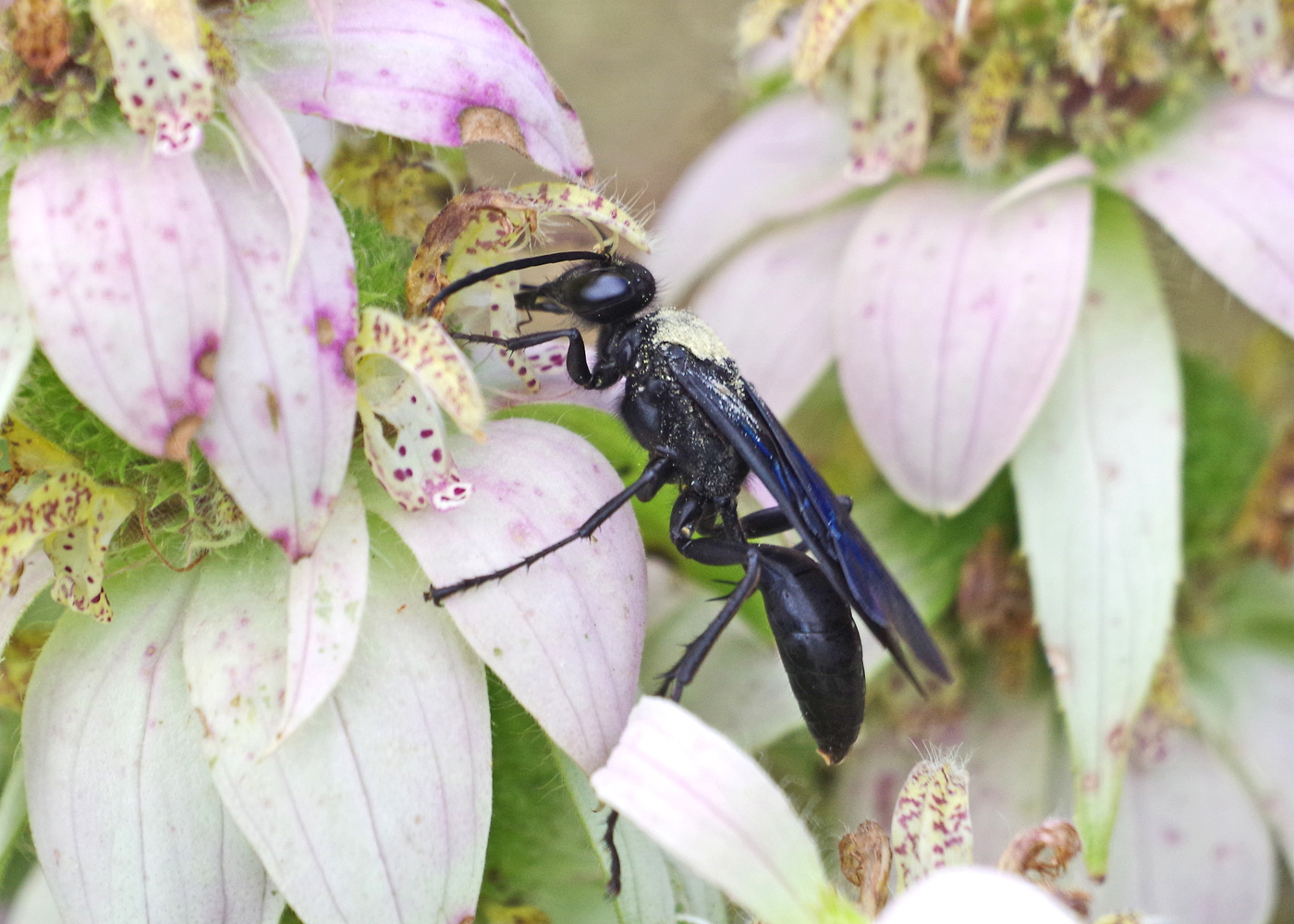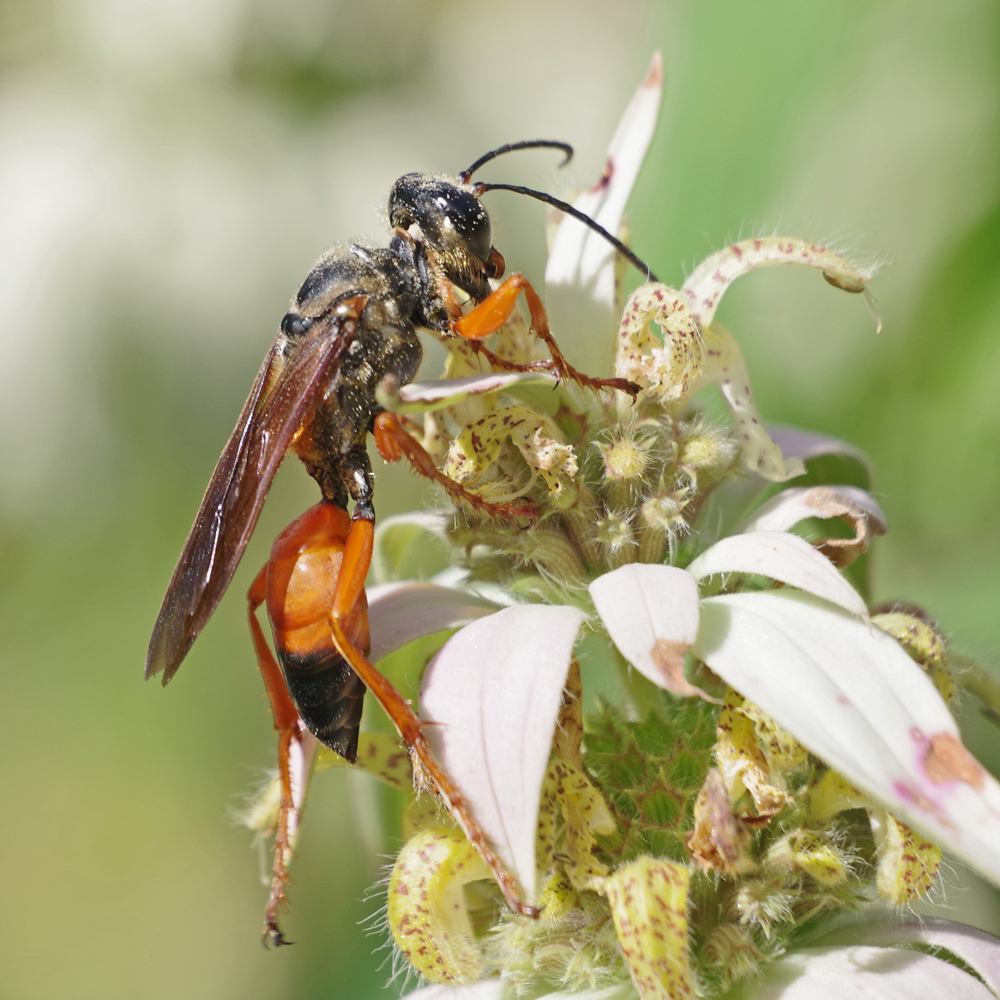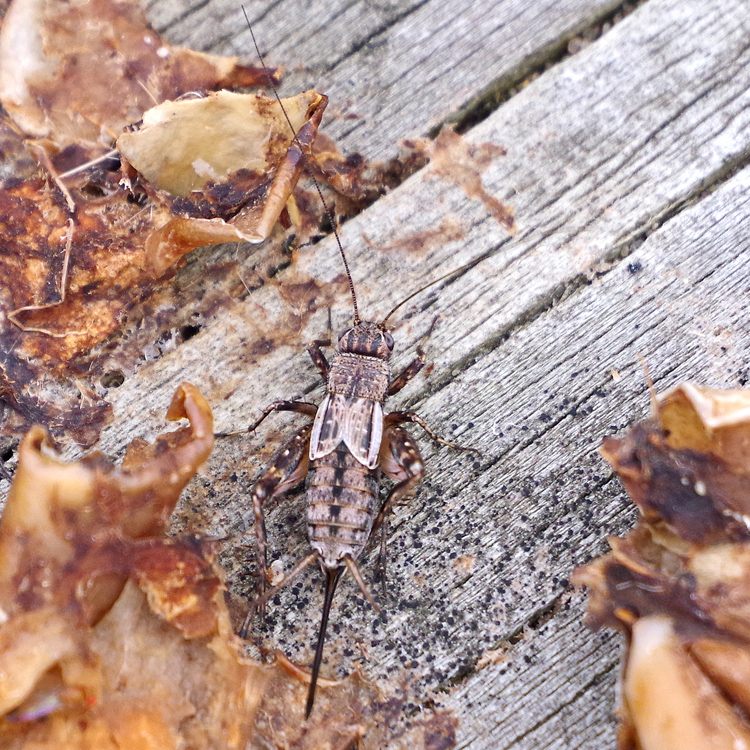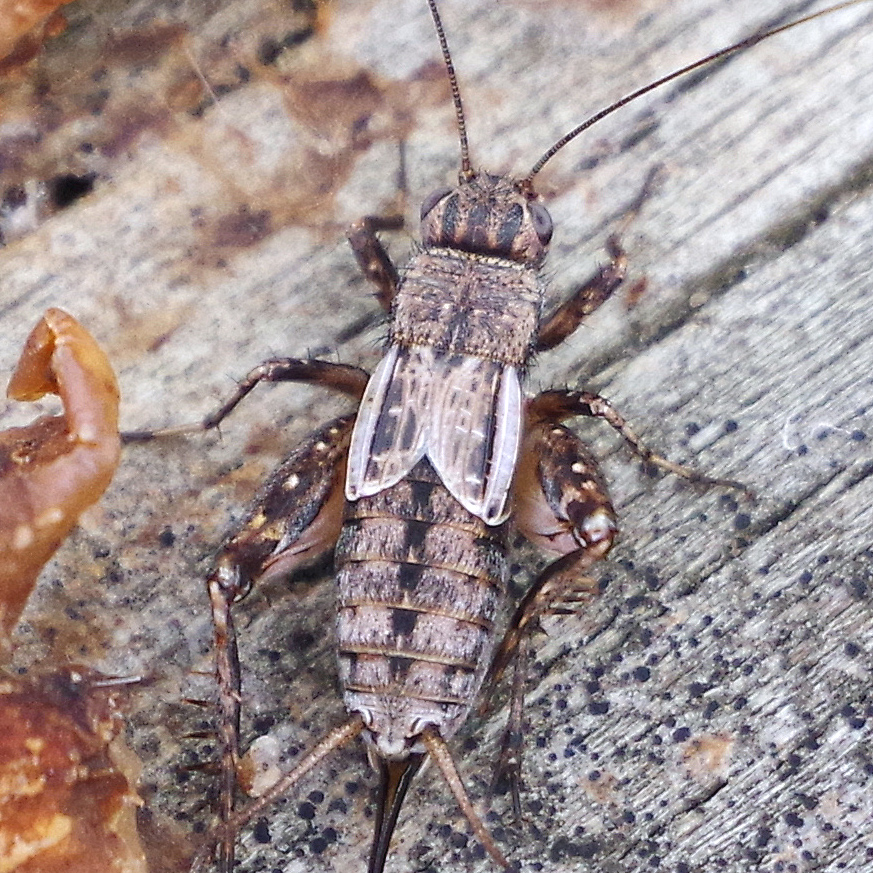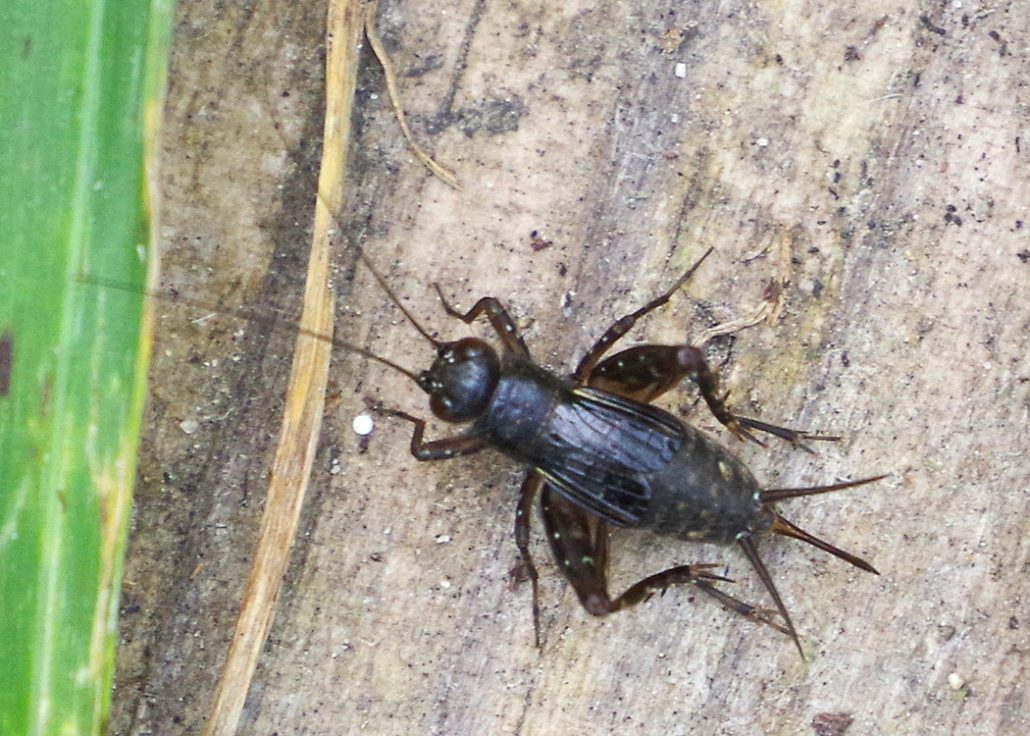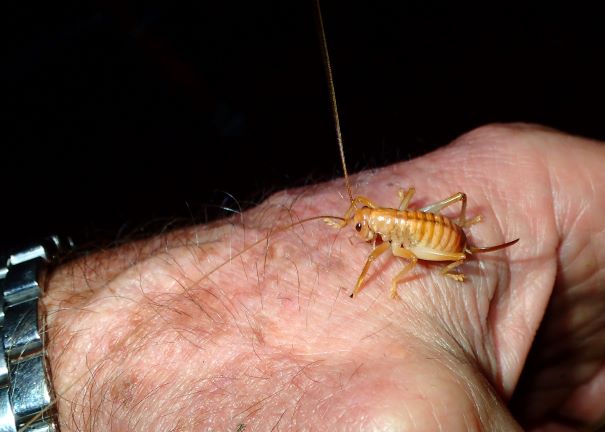
by Kate Redmond
Carolina Leaf-roller Cricket a Snowbird Special
Howdy, BugFans,
A while back, BugFan Tom sent these pictures of a Carolina leaf-roller cricket from the Deep South. Carolina leaf-roller crickets (Camptonotus carolinensis) are in the family Gryllacrididae, the Raspy crickets, a family we haven’t encountered before. And with good reason – although there are about 600 species in the family, all but one live elsewhere (with one-third of the known species, Australia is especially Raspy-cricket-rich). There’s only one genus in the family in North America, and only one species in that genus.
Raspy crickets are typically (but not always) wingless and nocturnal. They make silk with glands in their mouths (their silk is similar to that of silkworms) and use it to construct their daytime retreats in leaves or soil. The ability to make silk is pretty common among insects (think cocoon), but Raspy crickets are unusual because they can make silk as both nymphs and as adults. The “rasp” in their name refers a sound they make when they’re disturbed; the catch is that most animals that make noise have ears to hear it, and Raspy crickets don’t.
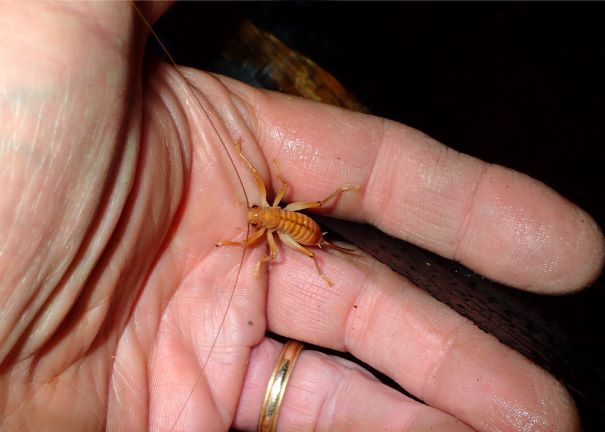
With bodies that are only about a half-inch long, Carolina leaf-roller crickets (CLRCs) are not imposing. Some come in green https://bugguide.net/node/view/1110118/bgimage, but most are a warm, honey color, and females have a conspicuous, up-curved ovipositor and a dark patch on their rump that one blogger thinks makes them look waspy. When it comes to antennae, though, CLRCs are overachievers – a half-inch of cricket may have three to four inches of antennae. CLRCs get around pretty fast, and although most sources say that they don’t jump, a few say that they do, and quite well. There are some great shots here https://www.marylandbiodiversity.com/view/8177 and here (scroll about half way down) http://listeninginnature.blogspot.com/2017/09/the-silent-ones.html. The BugLady thinks they’re pretty cute.
The map at bugguide.net, which relies on submissions of pictures by its members, shows a range that stretches from New York to Florida to Texas to Illinois https://bugguide.net/node/view/29828/data, but the BugLady found additional reports of the cricket in Ontario, North Dakota, and Iowa. Within that range, they’re found in trees and shrubs in deciduous forests, and they’re easily overlooked. The crickets are nocturnal (and so is BugFan Tom).
When they’re disturbed, CLRCs make sound by inflating their abdomen, stiffening a few of their legs, and then flexing the others to do push-ups. Sound is made as raised “pegs” on the abdomen rub against the legs on the way up and down. Stridulation is a noise made by the friction of rubbing two body parts together, and this is called defensive stridulation.
The BugLady was curious about an insect that makes sounds that it can’t hear, so she did a kittle reading about sound production in Raspy crickets, mostly in papers about Australian species of Gryllacrididae. They discuss defensive stridulation, to which the cricket may add a visual intimidation display and mandible-clicking, and which may get more frenetic if the intruder doesn’t get the message. Also in the Raspy cricket arsenal are foot-stomping and sending out vibrations by drumming on the substrate during courtship – males and females may perform a drum duet.
CLRCs are opportunistic feeders that hunt for aphids, caterpillars, and other small, soft critters https://bugguide.net/node/view/1881543/bgimage. It’s not uncommon for members of the grasshopper and cricket bunch to augment their diet of vegetables with the odd bit of protein, and many of the Gryllacrididae are omnivores and/or seed or nectar-feeders, but the BugLady didn’t find any reference to CLRCs eating plant matter. They are preyed upon by a wasp named Sphex nudus https://bugguide.net/node/view/982571/bgimage that captures them and drags them into her tunnels to provision her egg chambers https://bugguide.net/node/view/1313/bgimage.
After a night of hunting, CLRCs spend the day in a shelter that they create by bending a leaf, fastening it with web https://bugguide.net/node/view/212744/bgimage, and sealing themselves in. Here’s how the Field Guide to Grasshoppers, Katydids, and Crickets of the United States describes the process “During the day, individuals shelter in leaf rolls made by cutting into the edge of a leaf, folding over a flap, and holding the surfaces together with silk spun from the mouth. Somehow, the long antennae are completely contained within the shelter.” Bugguide.net adds that CLRCs “Sometimes use the pods of Bladdernut, Stahpylea trifolia, as a shelter instead of a leaf.” One Australian paper on Raspy crickets said that they reuse shelters, that they find their way back to the shelters by laying down a pheromone trail and using their very-sensitive, sensory antennae to follow the trail back, and that the pheromones produced by each individual are not generic but are unique to it.
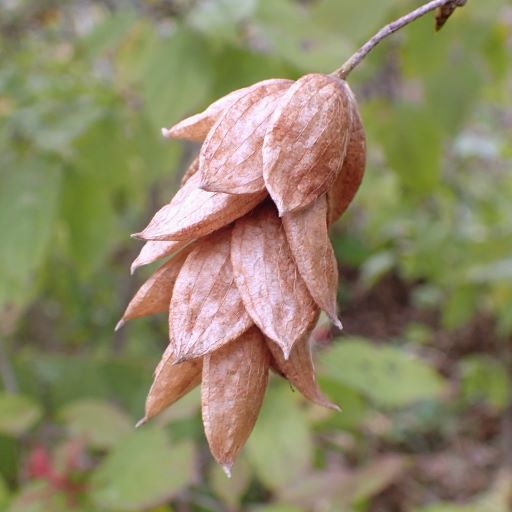
There were a few pictures online of CLRCs afflicted by a zombie fungus, a fungus that attacks arthropods, grows into and consumes their organs, and as the coup de grâce, overrides the insect’s brain and directs it to seek high ground rather than shelter. When the fungus is ready to shed its spores, its victim is up in the breezes where the spores will be distributed most effectively https://bugguide.net/node/view/240236/bgimage. For more grisly details, see http://jimmccormac.blogspot.com/2018/09/zombie-fungus-rides-again.html.
Thanks for the pictures, Tom.
Kate Redmond, The BugLady
Bug of the Week archives:
http://uwm.edu/field-station/category/bug-of-the-week/

